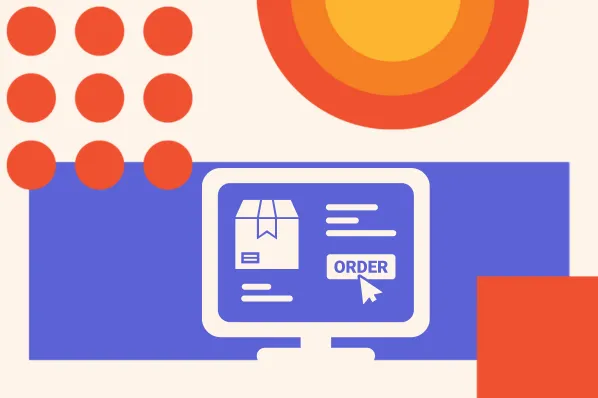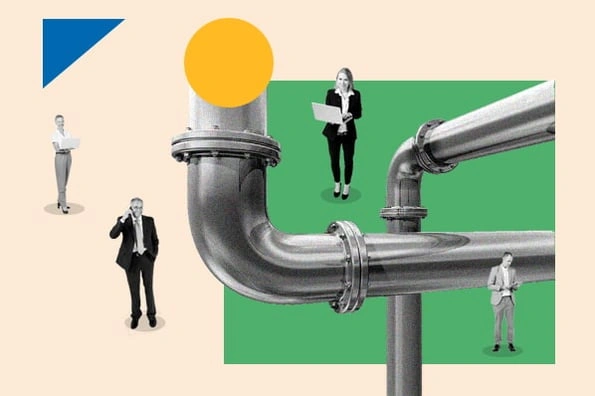Your CRM is the oxygen for a sales team’s life (HubSpot has a good, modern CRM and its free) but one of the most important aspects of your CRM that gets a lot of scrutiny is your deal pipeline. The purpose of the pipeline is to correctly project your monthly or quarterly results based on how deals move through a standard process.
As recently as 2015, a sales pipeline was a rudimentary look at your ability to meet or exceed your quota on an aggregate basis. It was typically a pain to manage, lacked essential detailed information and was essentially a time tax on a salesperson that added little value to their production.
Most legacy B2B pipelines had the following stages:
- Lead generated — (also known as lead assigned) defined a lead that met basic criteria of a contact who had interest into the product or service.
- Meeting scheduled — typically referred to a scheduled introductory meeting where a salesperson would qualify the prospect and determine if they were worth pursuing. The ideal outcome of an introductory meeting was a product demo.
- Demo completed — an opportunity for the salesperson to show the capabilities of the product.
- Request for quote — typically indicated that the prospect was requesting pricing information to potentially make a purchase.
- Proposal sent — a proposal or price quote was configured, produced, and sent to the prospect for consideration.
- Negotiation — the process of coming to an agreement on the price for the offer.
- Closed-lost or closed-won — indicated the outcome of the deal.
Fast forward to 2020, and a good B2B sales pipeline is more than a simple process diagram and deal outline that tracks a deal status. A modern B2B sales pipeline is a treasure trove of data to model and improve, providing insights that are critical to performance.
B2B Sales Pipeline
The sales pipeline can help senior management teams understand the health of the overall business, identify potential issues on a segment by segment basis and can serve as an early warning system for potential weakness in a region or product. For the modern sales manager or director, a good B2B sales pipeline can provide insightful data to improve team performance, support effective coaching, identify weak points in individual rep behavior and ensure best practices throughout the entire segment.
For the modern salesperson, a B2B sales pipeline is your scorecard to achievement and can identify critical conversion ratio information, identify specific skills improvement opportunities, and benchmark individual performance to industry standards and against best in class.
A modern B2B pipeline should be updated automatically with technology that sets the appropriate stage via defined criteria (Sales Hub is a great tool for this). Let’s review the standard stages of a modern B2B sales pipeline.
1. Identify lead and lead type.
So you have a steady stream of contacts on your radar — but how do you know if they’re ready for the sale? Here are the different types of contacts you are most likely to encounter during the sales process.
- Suspect — a company in your database that fits your ideal customer profile and has the potential to buy your product or service.
- Prospect — a contact at a suspect company who has a need and may be searching for a solution sometime in the next 12-24 months.
- Lead — a prospect that has taken an action or responded to a marketing or sales campaign and shows some level of interest in your product. There are multiple types of leads:
- INBOUND leads — leads that convert on your website.
- MQL or SQL leads — Marketing Qualified Leads or Sales Qualified Leads; typically have certain characteristics that would define additional sales follow up.
- Warm call or prospective leads — leads that are a good fit but have not taken action on your website or other inbound channels.
- Target account leads — leads in specific targeted accounts.
- Friends and family leads — leads you encounter from within your network.
- Event leads — leads you meet during a trade show or industry event.
- Referral leads — leads from current customers.
- Closed-lost or ghosted leads — previous customers or opportunities that have gone cold.
Different types of leads typically have different characteristics and close at different rates based on their defining characteristics. Successfully identifying what kind of lead you’re working with is a critical first step.
2. Connect call.
Once you identify a lead and a lead type, it’s time to set up a connect call (you can use HubSpot's free meeting scheduler to do this). This typically entails a 10-15 minute introductory call where the salesperson asks some basic questions to get a better understanding of what problem the client is looking to solve. The goal of this call is to gather pertinent information that will help you navigate the remainder of the sales process. Your goal here is not to jump straight to solution-mode. Instead, you want to come from a place of curiosity to understand your lead’s situation and to begin building trust.
3. Discovery call.
Next time you talk to your prospect, hop on a discovery call. A discovery call is a 25 to 50-minute question and answer period where the salesperson where you can dive deeper with your prospect.
During this call, you should aim to discuss your prospect’s goals, challenges, timeline, authority level, market landscape, and sense of urgency. This information will help you understand exactly what they’re facing in their business and to determine if there is an opportunity to work together.
4. Opportunity stage.
This is usually the first time a dollar value can be ascribed to a deal stage based on the information discussed in the discovery call. Where the previous stages are important for tracking, the opportunity stage is where you begin forming the deal.
Through the opportunity stage, you should learn the following information: who the prospect is currently buying from (if they have a vendor), three solid reasons they would buy from you, three reasons they may choose not to buy from you, and who the economic decision maker is for this sale.
With this data, you can determine how likely you are to secure a closed-won deal.
5. Conduct a demo.
Most prospects like to see the product in action before purchasing, so scheduling a demo may improve the odds of closing a deal and is an appropriate deal stage. After conducting your demo, you can have a variety of outcomes including:
- Demo complete — refers to a situation where the demo was given and the prospect decides not to continue the sales process.
- Second demo — the prospect has expressed interest after seeing the product and would like to review more features. In many enterprise opportunities, multiple product demonstrations are required.
6. Influencer buy-in.
During this stage, the prospect recognizes the value and expects their company to purchase the product in the future, but may not be the economic decision maker who signs off on the purchase.
In this case, buy-in from the decision maker is needed to proceed. Ask your contact who they are, what their stake is, where they have pain points, and prepare to proactively address those matters.
7. Decision maker buy-in.
After gaining consensus to move forward by the influencer, economic decision maker, and executive sponsor, the deal can move to the negotiation stage to finalize the price and necessary agreements.
8. Negotiation.
While a deal is under negotiation, the prospective company’s legal team typically steps in to assist with contractual obligations. This is when the final price and terms are agreed upon and signed off from all parties involved.
Don’t let your contact go dark during negotiation. Check in at regular intervals to find out which direction things are headed in so any turn towards a "no" doesn’t head too far in that negative direction without a chance for you to turn it around.
9. Closed-lost or closed-won.
If the deal is set to go through, the prospect can then fulfill payment indicating a closed-won deal. They can then begin the onboarding process to begin using the product. With business won you need to deliver on your promises — excellent products, great customer service, and ongoing support. Whatever was in your proposal, do that and more, and your one new customer will multiply as they refer business your way.
In a closed-lost deal, the prospect can decline the final offer and either opt for a competitor or decide to not purchase the product. However, if a deal is closed-lost, don’t write a lost opportunity off for good.
Circumstances and needs change, so think of ways you can stay top-of-mind without getting in the way. Ask for feedback on why you didn’t close their business, then use that to guide your follow up. Perhaps in several months you’ll add a new product or feature that fulfills one of their buying criteria. You should also use your CRM to stay in contact with relevant, periodic, useful content via social media or email to maintain the relationship.
Both sales reps and prospects benefit from a well-defined process. And when we skip the jargon, keep it fun, and think of our B2B customers as people with emotional drivers and needs, that process becomes all the more successful.
Sales Pipeline

.jpg)




.jpg)

![5 Reasons Why Sales Teams Miss Revenue Targets [+ How to Meet Them]](https://53.fs1.hubspotusercontent-na1.net/hubfs/53/revenue-targets-1-20250224-8507178.webp)


